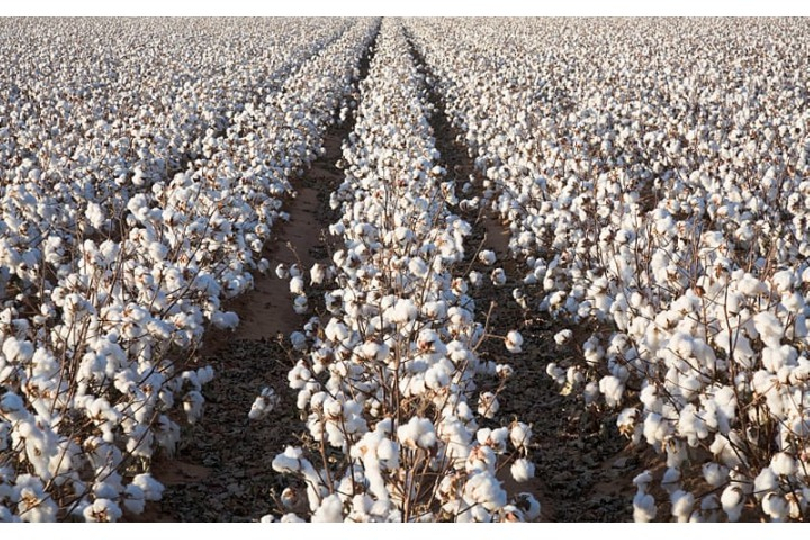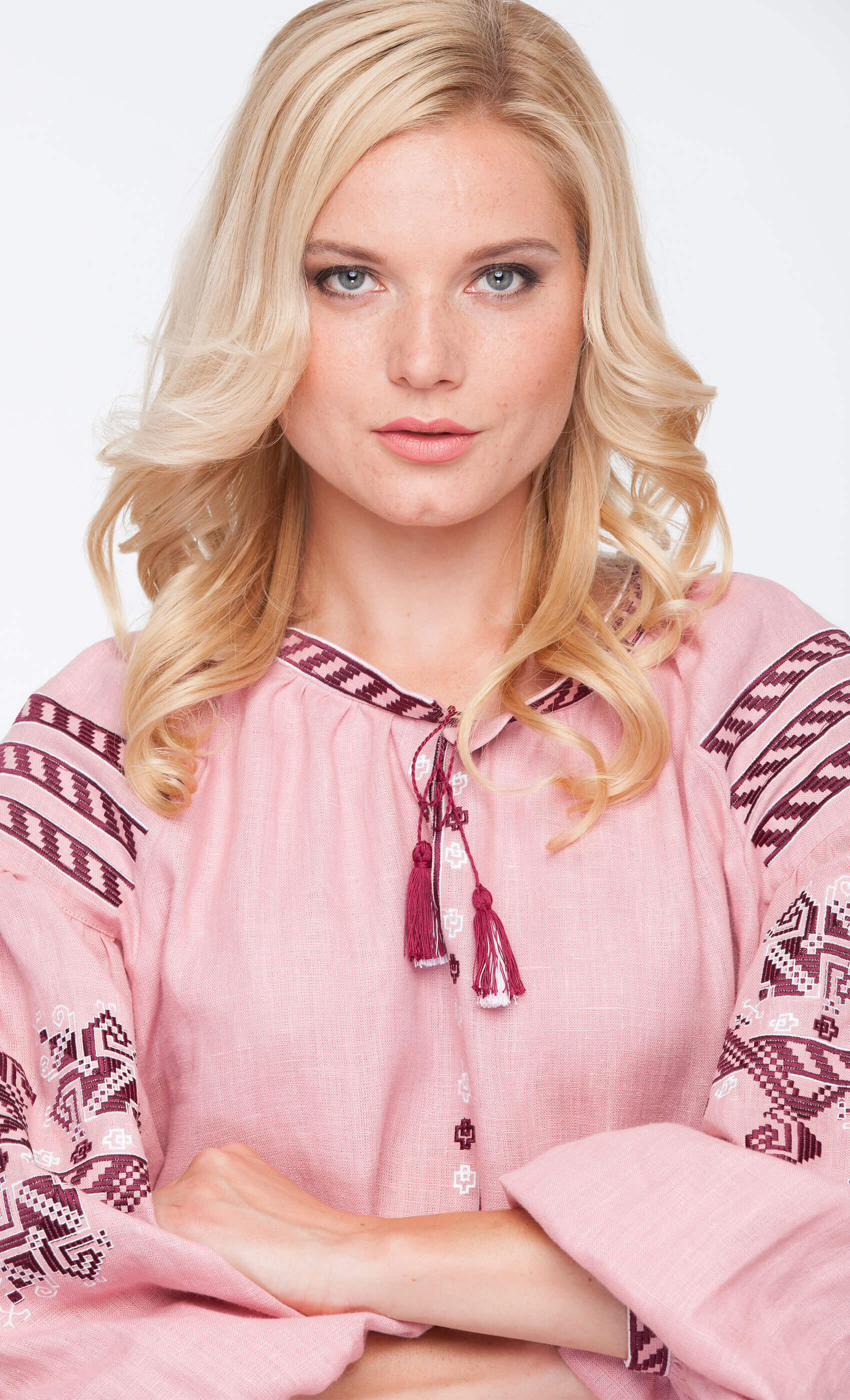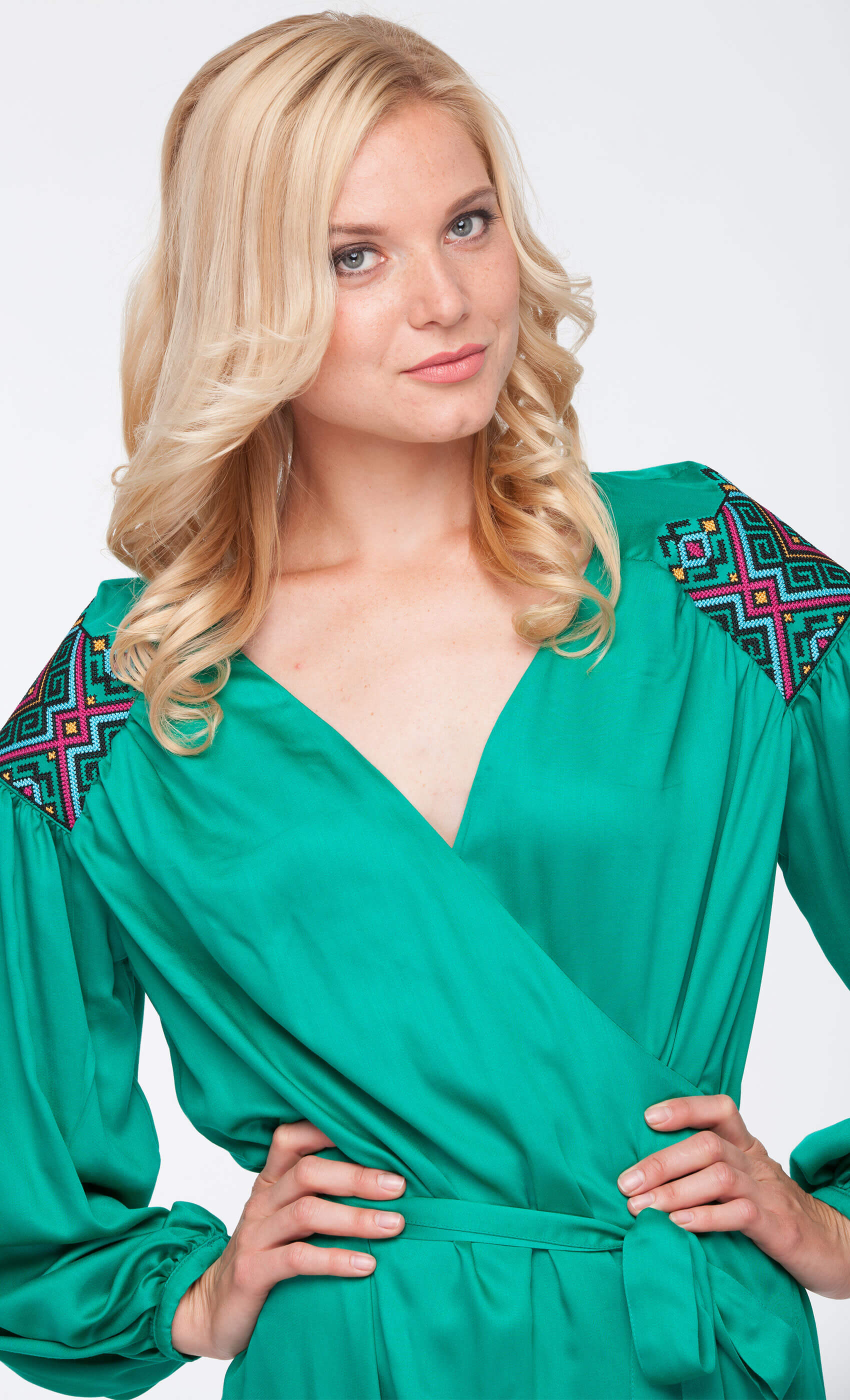A shirt delicate as love

The beauty and uniqueness of the Ukrainian vyshyvanka (traditional Ukrainian embroidered shirt) depends to a large extent on the material it is made from. Our ancestors could feel the cloth in order to hand saturation and brightness of colours, as well as a deep sense of embroidery down to us. Everything is quite important in embroidery technique: the fabrics and materials used to embroider the sacred patterns.
How to choose fabrics for vyshyvankas
Since earliest times people used homespun cloth made from hemp and flax. Linen fabric was soft, white and tender. Besides, hemp made cloth green and denser. People used to combine the properties of both plants in the fabric for embroidery. In such a way, they got more delicate and stronger clothes. Our ancestors embroidered on such fabric with white or green threads by adding black and red colours, thus making a time-honoured shirt bright and festive.

The fabric for vyshyvanka could also be made from wool. In that case, many factors influenced the quality and colour of the finished product, including the properties of fibres of different breeds of sheep, the time when the wool was removed from the animal and the way of its preparation for spinning.
Each type of fabric was of great importance for the final look of the finished vyshyvanka. As in early spring a good farmer scattered fields with seeds to provide for his family and have enough of everything for the whole year, so a woman-embroideress chose fabric for her work and covered it with threads to protect her family from the evil eye.
As a rule, children and women wore linen vyshyvankas because of their soft and delicate structure. Hemp fabric was used to sew men’s shirts and everyday things, such as towels, bedsheets and tablecloths. Woollen fabric was used for vyshyvankas that were usually worn in autumn and winter, because the structure of the cloth could warm by fitting the body closely.

In addition, women paid special attention to the threads used for vyshyvankas. They had to be thin, but strong and straight in order to pass through the cloth easily.
A first, women had to bleach threads for embroidery using ashes, and then to colour them. Profound knowledge of the properties of natural materials gave an opportunity to obtain various shades of both threads and fabric.
To cherish traditions
Thus, in due time the homespun cloth and threads employed by our ancestors were the most convenient material used for vyshyvankas. Natural raw materials guaranteed a high quality and durability of their usage.
We have the good fortune to have preserved the technology of our ancestors – modern craftswomen have an opportunity to use high quality fabrics even now. Shirts and vyshyvankas are colorful and look perfectly well on such materials as cotton, staple, lawn and silk.
Every customer chooses a vyshyvanka to his or her taste and depending on the purpose of its usage. Clothes made from flax, cotton and staple will perfectly suit for everyday wearing. For a festive occasion, it’s better to choose bright or silk vyshyvankas looking just great by adding some brightness and fashionable chic to the holiday.
Modern vyshyvankas are a low bow before our ancestors who have taught us to love and appreciate the natural beauty of a fabric and thread.
The beauty and uniqueness of the Ukrainian vyshyvanka (traditional Ukrainian embroidered shirt) depends to a large extent on the material it is made from. Our ancestors could feel the cloth in order to hand saturation and brightness of colours, as well as a deep sense of embroidery down to us. Everything is quite important in embroidery technique: the fabrics and materials used to embroider the sacred patterns.
How to choose fabrics for vyshyvankas
Since earliest times people used homespun cloth made from hemp and flax. Linen fabric was soft, white and tender. Besides, hemp made cloth green and denser. People used to combine the properties of both plants in the fabric for embroidery. In such a way, they got more delicate and stronger clothes. Our ancestors embroidered on such fabric with white or green threads by adding black and red colours, thus making a time-honoured shirt bright and festive.

The fabric for vyshyvanka could also be made from wool. In that case, many factors influenced the quality and colour of the finished product, including the properties of fibres of different breeds of sheep, the time when the wool was removed from the animal and the way of its preparation for spinning.
Each type of fabric was of great importance for the final look of the finished vyshyvanka. As in early spring a good farmer scattered fields with seeds to provide for his family and have enough of everything for the whole year, so a woman-embroideress chose fabric for her work and covered it with threads to protect her family from the evil eye.
As a rule, children and women wore linen vyshyvankas because of their soft and delicate structure. Hemp fabric was used to sew men’s shirts and everyday things, such as towels, bedsheets and tablecloths. Woollen fabric was used for vyshyvankas that were usually worn in autumn and winter, because the structure of the cloth could warm by fitting the body closely.

In addition, women paid special attention to the threads used for vyshyvankas. They had to be thin, but strong and straight in order to pass through the cloth easily.
A first, women had to bleach threads for embroidery using ashes, and then to colour them. Profound knowledge of the properties of natural materials gave an opportunity to obtain various shades of both threads and fabric.
To cherish traditions
Thus, in due time the homespun cloth and threads employed by our ancestors were the most convenient material used for vyshyvankas. Natural raw materials guaranteed a high quality and durability of their usage.
We have the good fortune to have preserved the technology of our ancestors – modern craftswomen have an opportunity to use high quality fabrics even now. Shirts and vyshyvankas are colorful and look perfectly well on such materials as cotton, staple, lawn and silk.
Every customer chooses a vyshyvanka to his or her taste and depending on the purpose of its usage. Clothes made from flax, cotton and staple will perfectly suit for everyday wearing. For a festive occasion, it’s better to choose bright or silk vyshyvankas looking just great by adding some brightness and fashionable chic to the holiday.
Modern vyshyvankas are a low bow before our ancestors who have taught us to love and appreciate the natural beauty of a fabric and thread.

Comments
No comment at this time!
Leave your comment